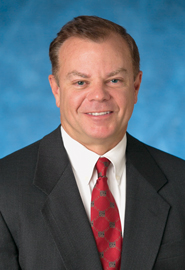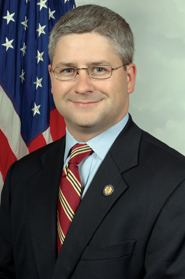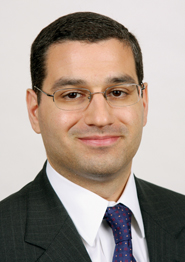>>Philip Cushman returns to Cowen & Co. as head of equity sales, where he began his career in the 1990s. Cushman, a 20-year veteran, is responsible for growing Cowen’s sales of its equities products. He comes from Jefferies & Co., where he spent the last six years, most recently as head of global equity product management and a member of the firm’s equity operating committee. He reports to Tom O’Mara and Dan Charney, co-heads of equities.
If you’ve gotten a new job or promotion, let us know at onthemove@sourcemedia.com
>>Jennica Ross and Randy Scharringhausen join WallachBeth Capital. Ross, a nine-year pro, joins as a director and strategic relationship specialist. She was most recently a director for the strategic relations group at Guggenheim Funds Distributors, after a five-year stint as director of equity syndicates sales and marketing at UBS Financial Services.
Scharringhausen, a 17-year veteran, signed up as an institutional equity derivatives sales trader, focusing on options and merger arbitrage. He began his career as an options market maker at the American Stock Exchange and later became head of New York floor trading for Knight Capital Group. He joins WallachBeth from his own options brokerage and research firm, Capstone Global Markets.
>> Sales trader Kevin McCarthy and sales pro David Donovan join B. Riley & Co. at its newly opened Boston office. McCarthy, a 20-year veteran, comes from Detwiler & Fenton, where he was a managing director and sales trader. He has traded at Gleacher & Co., Pali Capital, Susquehanna Bank and Thomas Weisel. He reports to Knut Grevle, director of equity trading.
Donovan, a 15-year vet, comes from Detwiler & Fenton, where he was in institutional sales. He has done stints at Bank of America, Susquehanna Bank and Gleacher & Co. Jonathan Mordoh, a 26-year pro, joins B. Riley at its New York office and comes from Think Equity, where he worked in sales. He began his career at Salomon Brothers trading equity derivatives and later moved to institutional sales. He reports to Andy Moore, director of institutional equity sales.
>>Mark Koczan joins Raymond James as a senior vice president and sales trader in its equity sales trading group. Koczan, a 20-year veteran, spent the last five years at Morgan Keegan. He started his career on the floor of the New York Stock Exchange with DLJ as a floor trader. He has done trading and sale stints at NatWest Markets, Dresdner Kleinwort and Advest. He reports to Paul Powers.
>>Kent Christian, head of Wells Fargo Advisors’ financial services group, has been named president of the firm’s Financial Network, or FiNet, the broker-dealer affiliate through which it supports independent financial advisors. In his new role, he will report to Brand Meyer, president of Wells Fargo Advisors’ independent brokerage group. A 29-year industry veteran, Christian joined Wells Fargo in 2005. Before that, he was the national sales director for Raymond James Financial Services. Earlier in his career, he worked for PlanMember Financial and Bank of America.
>>Robert Manning joined Evercore Partners as a sales trader handling real estate investment trusts. Manning was previously a sales trader with Keefe, Bruyette & Woods. He joined Evercore with two other REIT specialists from Keefe Bruyette.
>>Elizabeth Tolomeo joined Academy Securities as managing director for Chicago sales and trading, establishing and managing the firm’s Midwest branch. The 20-year veteran of the industry previously spent more than three years at Melvin Securities. She will report to Michael Naidrich, head of East Coast trading.
Daniel Lennon also joins Academy Securities as a director and partner. A one-year newbie, Lennon, will work with the firm’s sales traders to build out trading relationships and bring in new business. Prior to Academy, he worked at AEW Capital Management Partners Fund. He reports to chief executive Chance Mims.
>>Brian Nigito joined proprietary trading firm Jane Street Capital. Nigito was previously with Getco, responsible for its options market-making platform. Nigito was an early employee at the Island ECN and later in charge of high-frequency trading at Citadel Investment Group.
>>Francis Corcoran became president and chief administrative officer of the National Stock Exchange. Corcoran was previously an executive vice president at Perimeter Capital. Before that he was a senior vice president at the American Stock Exchange. At NSX, he reports to chairman and chief executive officer David Harris.
>> Deutsche Bank has brought on three trading pros. Jeff Christian joins the bank in equity derivatives sales and will be based in San Francisco. He will oversee West Coast coverage and report to Greg Kuppenheimer. Christian joins from Credit Suisse, where he managed West Coast equity derivative sales.
Jonathan Simon also joins as a managing director in equity derivatives sales. In his New York-based role, he will manage relationships with hedge funds and asset managers. Simon has more than 20 years of experience and spent the last eight years as a managing director in equity derivative sales at Citigroup. Simon will also report to Kuppenheimer.
Brad Kurtzman comes on board as a managing director and head of quantitative trading. He will be based in New York. Kurtzman has more than 12 years of trading experience, most recently as head of U.S. equity derivatives trading at Citibank. He will report to Tom Patrick.
>> Union Gaming Advisors hired two sales traders, Matthew Brown and Kevin Debbs, for its Las Vegas headquarters. The hires are part of a build-out of the firm’s equity trading platform. Brown most recently covered institutional clients at Susquehanna Financial Group. Prior to Susquehanna, he spent eight years at Kellogg Partners. Debbs joins from Deutsche Bank Securities, where he was head of domestic sales trading in North America and responsible for a team of 18 traders.
>> Michael Riffice joins BGC Partners as a managing director and head of futures and options for the Americas. Riffice, a veteran of more than 18 years, will look to grow the firm’s derivatives business. Riffice has held senior roles at Barclays Capital and SBC/UBS. He reports to J.P. Aubin, executive managing director and global head of listed and structured products.
>> Jon Ross was named Getco’s new chief technology officer. Ross will oversee the firm’s strategic technology platform and the development of its suite of trading technology and execution services products. An eight-year industry veteran, Ross has been with the market maker for the past four. Prior to his appointment as CTO, Ross was head of Getco Execution Services in Europe and oversaw order management, execution and technology solutions for the company’s European clients. Also, he served as CTO of the Nasdaq stock market and of the alternative trading system Inet. Ross will be based out of Getco’s Chicago headquarters and will report to chief executive Dan Coleman.
(c) 2012 Traders Magazine and SourceMedia, Inc. All Rights Reserved.
http://www.tradersmagazine.com
http://www.sourcemedia.com/











Exec Opposes Sub-Penny Pricing
There’s nothing wrong with regulators experimenting with new pilot programs in order to improve the structure of the equity marketplace. But the one thing they should avoid at all costs is sub-penny pricing.
That’s according to Kevin Cronin, global head of equity trading for Invesco. He said sub-penny pricing would be an absolute disaster for the industry. If traders could jump in front of an institutional bid or offer for a tenth of a cent, institutions would never want to post bids or offers, he said.
He was sympathetic to the idea of a trade-at rule-which would require broker-dealers to give meaningful price improvement in order to internalize trades. But he said it would cause more harm than good if it included sub-penny pricing.
Stocks under a dollar already trade at sub-penny increments, and an argument could be made for sub-penny pricing for stocks under two or three dollars, but under no circumstances should that regime be applied across the board, Cronin said.
“The top 100 or 200 names trade well in a penny environment, but the vast majority of others don’t, so why in the world would we go to sub-pennies?” Cronin said. “That would be among the worst developments that could happen in the U.S. equity markets.”
Instead, he suggested a pilot program that would make tick sizes larger. Regulators could permit certain smaller stocks to trade at increments of more than a penny and see if that increases liquidity. Cronin said liquidity is currently a problem with a number of smaller stocks, and if larger tick sizes could increase liquidity in those names by drawing in more market makers, buyside firms like Invesco would definitely be more likely to hold them.
Cronin was supportive of the idea to impose fees on cancelled orders. Several exchanges have proposed such fees, but Cronin said those plans would likely penalize too few players to be effectual. He told Traders Magazine the bar could be gradually raised until it started having a positive impact on the market.
“It would be very dangerous for anybody to just pick a number and say that anything more than, for instance, 30-to-1, is a bad number for cancelations to trades,” Cronin said. “Who is to say that wouldn’t wipe out entirely a highly beneficial market-making strategy that actually did provide liquidity to the markets?”
Gradually increasing standards would be the safest approach to cancelation fees, he said, though there are other options. Thomas Joyce, chief executive officer of Knight Capital Group, has recommended minimum quote durations, which Cronin said could also work.
Another market-structure issue that troubles Cronin is the system of liquidity rebates that incentivizes brokers to make routing decisions based on rebates rather than on what is best for the client. While it’s difficult to tell how bad the problem is-or even if there is a problem at all-a pilot program could shed light on the effects such rebates really have.
Cronin suggests prohibiting rebates for a certain set of securities so regulators can study the trading data and determine if further rulemaking is warranted.
“See if that changes behavior,” he said. “We might have a hypothesis on what it would do, but let’s see. Let’s put the data together and see what the experience shows us.”
(c) 2012 Traders Magazine and SourceMedia, Inc. All Rights Reserved.
http://www.tradersmagazine.com
http://www.sourcemedia.com/